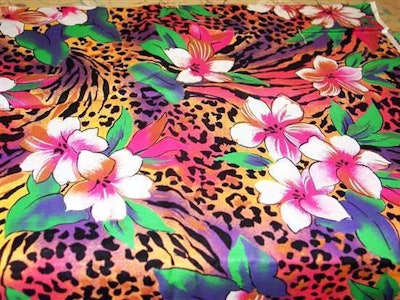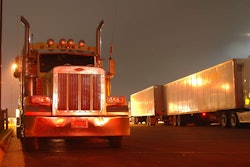Unless you’re blind, if you’ve been in a truck stop once in the past two years, you’ve seen the rack of five dollar dresses.

The sheer number of these hideous frocks produced makes one wonder just who in the world is buying them? If the frenetic fabric patterns and poor quality don’t dissuade customers, surely the fact that they’re made in Eastern Quicksandastan by nine-year-old kids should be a deterrent. (This may or may not be a filthy lie, but I swear you can smell the tears of children on the fabric. Again, possible filthy lie.)
The worst part of the dress debacle is, at some point in time, someone thought this was a good idea. They actually said, “Hey! Let’s make ten metric tons of poorly constructed dresses every single day for the rest of time and eternity! We can sell them for five bucks at truck stops and be rich!”
You have to think there was at least one person in the office who was like, “Woah, wait a minute Joe. Ten metric tons involves a lot of labor – why not just make a reasonable number of nice dresses we can sell at a higher profit margin, thus decreasing our overall output for maximum increases and making a product people will buy more than once?”
This is where Joe defenestrated his office mate and went on to make ugly dresses. Unfortunately, he found a market for them in a venue where people have few choices, and he probably does very well these days.
Here’s the point: you make a bunch of ugly dresses in third world countries, that don’t fit right or work well, and you’ll end up selling them cheap to a captive audience. Sound familiar?
Well, maybe it was a stretch, but here’s my spin on it.
Truck manufacturers have been tasked with “Phase 2” of the EPA guidelines, and they’re all cool with that, everyone knew it was coming. They’ve made great strides in efficiency, they’re producing a better technically engineered system. Goody. That would be super awesome if they were completely producing these fantastic saviors of the environment in countries that had standards the EPA wouldn’t crap their pants over. (Or, the halls of their offices, which is fairly common practice, it seems.)
George has personally run a blue million parts and pieces to Mexico for paint and assembly, for various manufacturers, and while Mexico has stepped up their game quite a bit in the pollution-management department, they still fall short of standards our government would impose. Hence one of the reasons manufacturers choose to go there – it’s cheaper and easier. They can produce more trucks, whether or not people are buying them.
You can’t hate them for it. The truck manufacturing industry alone has been asked to bear a huge brunt of a problem they don’t create by themselves. Asking the manufacturers to tack on additional costs for each and every truck is ridiculous when inefficient shipping and receiving practices aren’t taken into consideration, and poor infrastructure is rarely cited in pollution causes. The millions of gallons of fuel that could be saved yearly by making shippers and receivers responsible for idle/detention time, combined with the engine efficiency already achieved, would make an exponential difference in air quality, consumption levels and the overall carbon footprint of the industry.
Attacking the symptoms of a disease only makes the patient comfortable until they die. Attacking the rot that causes the disease is what saves them. We can go about the environmental issues we have by attacking symptoms all day long, but the rot causing a great deal of the problem will continue to fester, and until it’s taken control of, and managed along with the symptoms, it’s a futile effort. We end up with a bunch of cheap dresses no one wants to buy more than one of, and we still have pollution problems.










